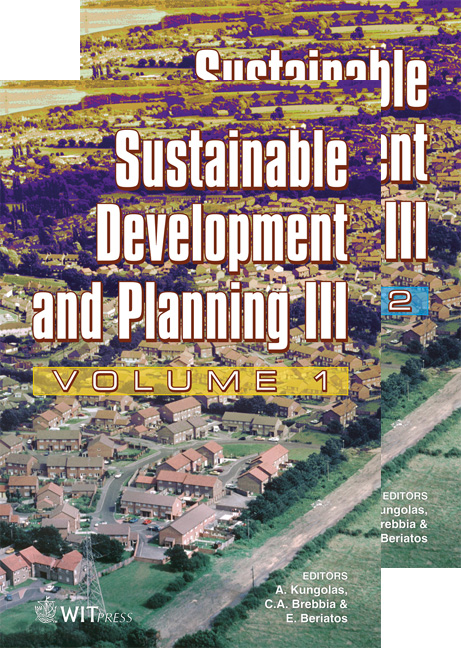Urban Assets And Urban Sustainability: Challenges, Design And Management
Price
Free (open access)
Transaction
Volume
102
Pages
9
Published
2007
Size
322 kb
Paper DOI
10.2495/SDP070131
Copyright
WIT Press
Author(s)
J. Eyles
Abstract
Urban assets are key resources, often seen as part of critical infrastructure. They consist of physical elements (often natural or historic) in the city and are linked to quality of life. Innovative people and businesses are also crucial urban assets, necessary to ensure a sustainable urban future. This paper examines the importance of place-making (utilizing such assets) for such a future. It lays out the challenges (e.g., sprawl, brownfield sites, dereliction) facing many cities and the design elements and institutional mechanisms (e.g., local character, density, mixed uses, investment, leadership) to enhance place-making and branding for urban development, growth or revitalization. The paper illustrates the use and enhancement of urban assets for a sustainable economic and environmental future with brief case studies, emphasizing finally the case of an industrial city – Hamilton, Ontario. Keywords: urban assets, design, urban problems, sustainability, institutional mechanisms. 1 Introduction In recent years, there has been growing and intense interest concerning critical infrastructure and urban assets. Critical infrastructure has come to the fore largely because of security issues and the need to protect important assets. Canada [1], the European Union [2] and the United States [3, 4] have identified such infrastructure and key assets, largely in terms of physical resources such as telecommunications, power systems, banking and finance, transportation, water supply systems, emergency services (including health care), food systems, commerce and continuity of government. But consideration of these matters,
Keywords
urban assets, design, urban problems, sustainability, institutional mechanisms.





